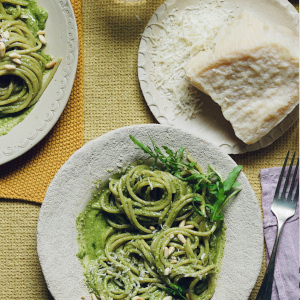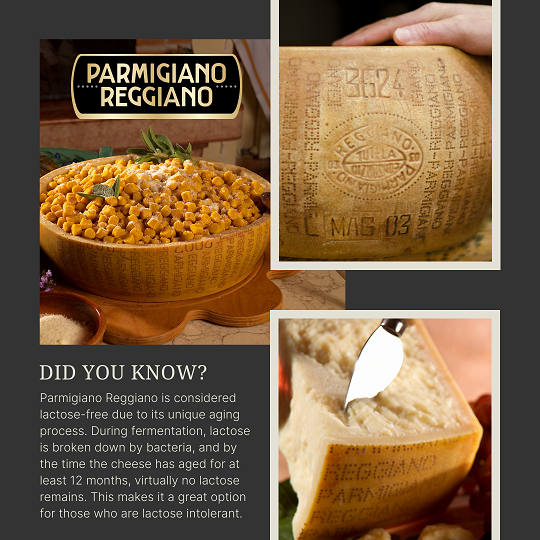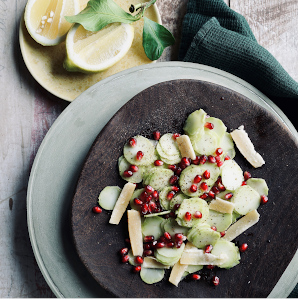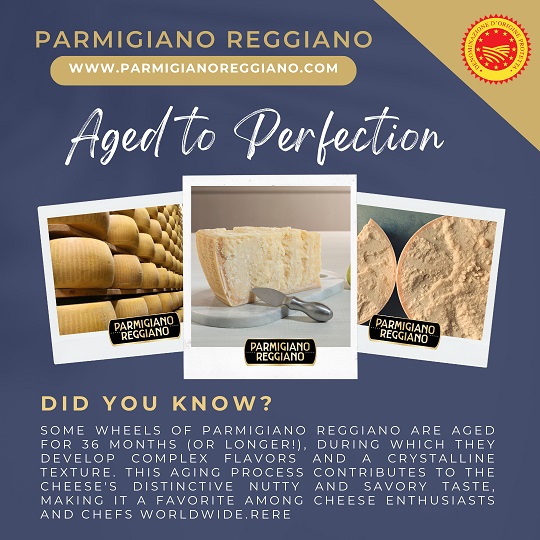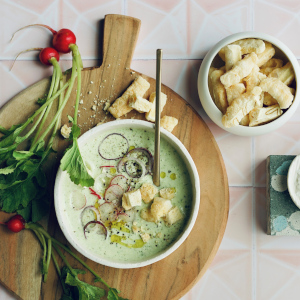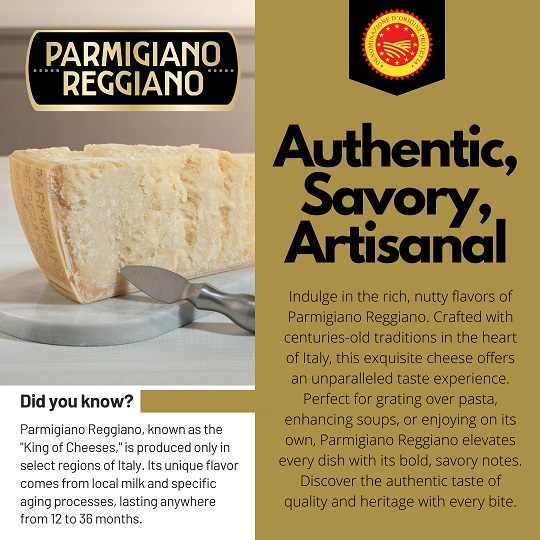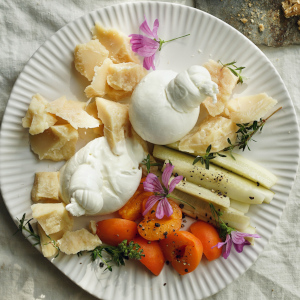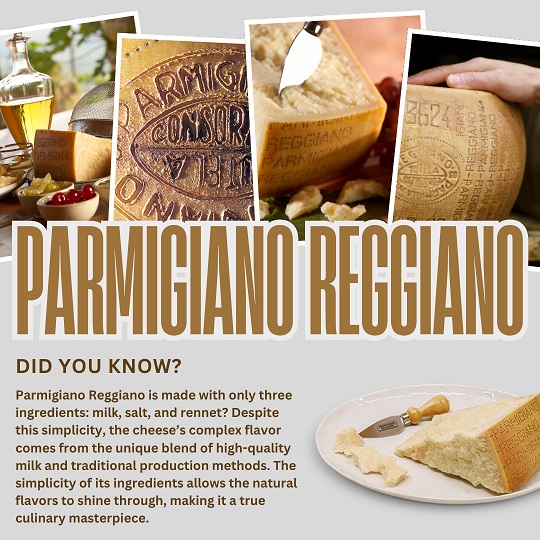
Parmigiano Reggiano
Explore the Consortium website at
www.parmigianoreggiano.com
The art.
Fostering the growth of the cheese-making community.
- Providing Educational Programs: Offering training and workshops to enhance the skills and knowledge of current and aspiring cheesemakers.
- Ensuring Quality Standards: Maintaining strict quality control and certification processes to uphold the integrity and reputation of Parmigiano Reggiano cheese.
- Supporting Sustainable Practices: Encouraging environmentally sustainable farming and production methods to protect the land and resources essential for cheese-making.
- Enhancing community growth: Continuously and actively promoting collaboration among local cheesemakers.
The story.
A remarkable history spanning nearly a thousand years, from its origins to the present day.
- Historic Traditions: Maintaining cheese-making methods that have been passed down through generations since the Middle Ages, preserving the authenticity and heritage of the cheese.
- Cultural Significance: Playing a vital role in the cultural and culinary identity of the Emilia-Romagna region in Italy, with Parmigiano Reggiano becoming an iconic symbol of Italian cuisine.
- Evolution and Adaptation: Successfully evolving and adapting to modern challenges while staying true to its roots, ensuring the enduring quality and global recognition of Parmigiano Reggiano cheese.
The land.
Safeguarding the PDO involves protecting the land where it is produced.
- Environmental Respect: The consortium ensures that the natural balance of the environment is maintained. This includes respecting the biodiversity and natural resources.
- Geographical Restrictions: Parmigiano Reggiano can only be produced in specific regions. This strict geographical limitation helps preserve the unique characteristics of the cheese.
- Traditional Farming Practices: The consortium promotes and supports centuries-old traditional farming practices. This includes using milk from cows fed on locally grown feed and ensuring no additives or preservatives are used.

